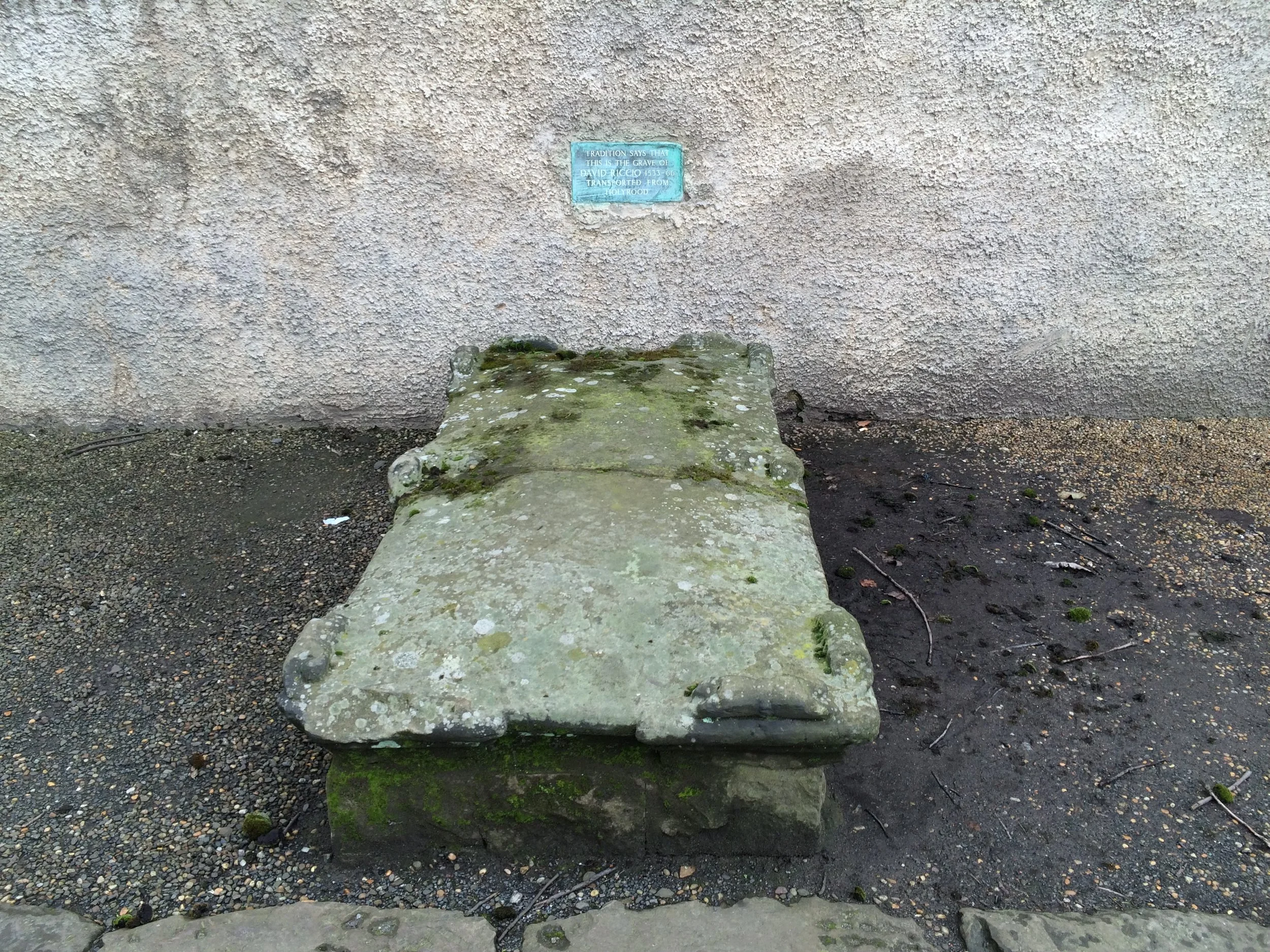Grave Concerns - Edinburgh in Five Burials
Edinburgh's graveyards are some of the most peaceful and interesting places in the city - there are five burial grounds within the city centre, and all of them maintain public access for visitors to enjoy a sense of their history.
Here is a very short selection of graves to seek out in Edinburgh, offering an overview of the city and the inhabitants who have shaped it over the last 900 years or so...
(Other Grave Concerns entries can be found through the tag link at the bottom of the page...)
JOHN KNOX
Parliament Square, near St Giles' Cathedral on the Royal Mile, was originally an adjacent burial ground, running down the slope of the hill to the south of the city.
In the seventeenth-century, plans were made to reclaim the graveyard space and develop it as prime real estate - the bodies that were exhumed were all transported to the nearby Greyfriars kirkyard, and a new parliament hall was built on the site beside St Giles'.
One burial marker remains in the car park of Parliament Square today. Under parking space number 23 is a stone marking the place of burial of John Knox, the protestant reformer and former minister of St Giles' who led the Scottish Reformation in 1560.
What the stone is less clear on is whether Knox is still buried there - differing versions of the city history can't agree on whether his corpse was exhumed, along with the rest of the burials (in which case the stone marks the site of his burial, but doesn't specify that he still lies there), or whether Knox was considered the one figure important enough to leave 'at rest' when the graveyard was cleared (in which case he may still be under the tarmac today).
JAMES CRAIG
In 1766 a young man by the name of James Craig entered a public competition to design a layout for the 'new' town of Edinburgh, which was to be developed on the northern side of the city.
Craig had completed his apprenticeship as an architect just the year before, and so was still a young, upstart figure alongside some of the more notable - and famous - names who were practising as designers and engineers in the city at that time.
Craig's vision for the New Town - a broad grid system - was the one chosen as the winner of the competition, and before he was even thirty years old Craig was to experience his greatest and most accomplished success, a city plan which exists to this day, observable in the wide Georgian-era terraces of the New Town. George Street, Princes Street, and the two gardens of St Andrew Square and Charlotte Square survive as major features in the city, thanks to the genius vision of this singular young man.
His later career would never achieve such levels of success, and Craig died of tuberculosis at his home on the West Bow in 1795. Having tried to move away from the "monotony of the straight line" around which his New Town plans were fixed, he died in debt and was buried in an unmarked grave within the Greyfriars kirkyard.
The stone above his grave today was a later addition, a modest (and unremarkable) grave for a man who did so much to shape the city of Edinburgh.
JOHN PORTEOUS
In 1736 a series of events rocked the sense of law and order in Edinburgh, when the Grassmarket became the scene of a violent riot that left six people dead. John Porteous was the captain of the City Guard who stood trial for murder as a result, but who was brutally executed by a mob who feared he may have avoided the death penalty for his behaviour.
The events became known as the Porteous Riots, and were a central element of Sir Walter Scott's novel The Heart of Midlothian. After his death, Porteous was initially buried in an unmarked grave in the Greyfriars kirkyard, and in the 1970s was afforded a more commemorative grave stone by a society who still consider him to be an upstanding representative of British justice, cut down in his prime and murdered for carrying out his duties.
DAVID RIZZIO
Another murder victim is commemorated in the Canongate kirkyard. David Rizzio was the Italian secretary to Mary, Queen of Scots, who was assassinated in Mary's bedchamber in Holyrood Palace in 1566. Legend has it that Rizzio suffered more than fifty stab wounds before his body was thrown from a window into the street, and the stone above the grave records that 'according to tradition' he was buried here at the Canongate kirk.
Some consider it unlikely that Rizzio is indeed buried here, as the church was only built in 1688 - 132 years after Rizzio's murder...
Regardless, the grave is an important reminder of the church's association with the monarchy in Scotland, and remains the church where the king worships during his time in residence at Holyrood.
CHARLES EWART
Another grave outside a traditional burial ground is that of Charles Ewart, who is buried on the esplanade in front of Edinburgh Castle.
Ewart was a soldier with the Scots Greys, who fought at the Battle of Waterloo against Napoleon in 1815. It was Ewart who successfully captured the regimental emblem - the eagle - of the French 45th unit, shortly before victory was declared, and many considered Ewart's actions to be a key moment in the winning of that historic battle.
Ewart’s original grave stone
Following the capture of the eagle, it became the emblem for the Royal Scots Dragoon Guards, and the figure that Ewart seized in battle is still preserved in the regimental museum inside Edinburgh Castle itself.
Ewart continued to serve in the military until 1821, and lived near Manchester until his death in 1846. His body was buried in a churchyard at Salford initially, before being exhumed in 1938 in order to give him a more ceremonial burial in front of the castle where his former unit are still commemorated. His original grave stone was set into the ground behind the grander memorial stone.
Ewart's grave stands near the top on the right hand side of the castle esplanade with a substantial ceremonial altar making his grave. Equally notably, a pub bearing his name can be found on the Lawnmarket section of the Royal Mile, and is formally the highest pub in Edinburgh...
Discover more of Edinburgh’s historic burials on a private walking tour of the city…
Memorial grave stone for Charles Ewart






